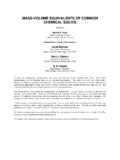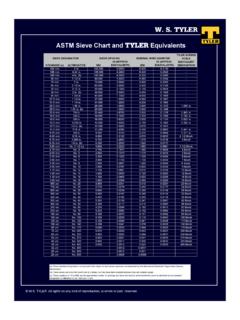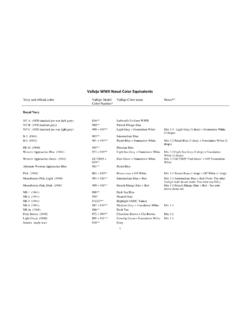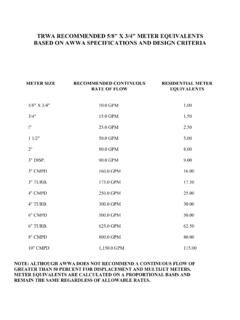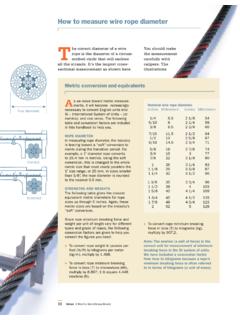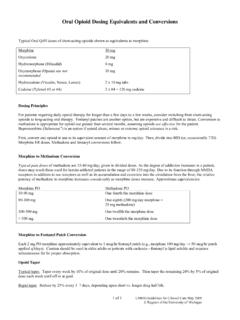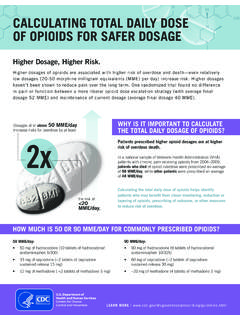Transcription of Discrete-Time Equivalents To Continuous-Time Systems
1 CONTROL Systems , ROBOTICS, AND AUTOMATION Vol II - Discrete-Time Equivalents to Continuous-Time Systems - Mohammed S. Santina and Allen R. Stubberud Discrete-Time Equivalents TO Continuous-Time . Systems . Mohammed S. Santina Senior Technical Fellow, The Boeing Company, USA. Allen R. Stubberud University of California Irvine, USA. Keywords: Digital control, sampling, reconstruction, Euler's methods, Tustin transformation, frequency prewarping, matching step response, pole-zero matching, state space models. Contents S. TE S. 1. Introduction R. AP LS. 2. Design of Discrete-Time Control Systems for Continuous-Time Plants Sampling and A/D Conversion Reconstruction and D/A Conversion C EO.
2 3. Discrete-Time Equivalents of Continuous-Time Plants 4. Discretizing Continuous-Time Controllers Numerical Approximation of Differential Equations Euler's Forward Method (One Sample). E . Euler's Backward Method (One Sample). H. Trapezoidal Method (Two Sample). PL O. An Example Mapping Between S and Z Planes Using Euler's and Tustin's Methods M SC. Frequency Response Approximations Bilinear Transformation with Frequency Prewarping Matching Step and Other Responses SA NE. Pole-Zero Matching 5. Discretization of Continuous-Time State Variable Models Discrete-Time Models of Continuous-Time Systems Discrete-Time Approximations of Continuous-Time Systems U.
3 Glossary Bibliography Biographical Sketches Summary When a digital controller is designed to control a Continuous-Time plant it is important to have a good understanding of the plant to be controlled as well as of the controller and its interfaces with the plant. There are two fundamental approaches to designing Discrete-Time control Systems for Continuous-Time plants. The first approach is to derive a Discrete-Time equivalent of the plant and then design a Discrete-Time controller directly to control the discretized plant. This approach to Encyclopedia of Life Support Systems (EOLSS).
4 CONTROL Systems , ROBOTICS, AND AUTOMATION Vol II - Discrete-Time Equivalents to Continuous-Time Systems - Mohammed S. Santina and Allen R. Stubberud designing a digital controller directly, which has many variations, parallels the classical approach to analog controller design. One begins with simple Discrete-Time controllers, increasing their complexity until both steady state error and transient performance requirements are met. The other approach to designing Discrete-Time control Systems for Continuous-Time plants is to first design a Continuous-Time controller for the plant, then derive a digital filter that closely approximates the behavior of the original analog controller.
5 The filter design can approximate the integrations with Discrete-Time operations or it can be made to have step (or other) response samples that are equal to samples of the analog controller's step (or other) response. Usually, however, even for small sampling periods, the Discrete-Time approximation performs less well than the Continuous-Time controller from which it was derived. S. TE S. In this chapter, several classical and state space methods for discretizing continuous - R. AP LS. time Systems are developed and illustrated. 1. Introduction C EO. The rapid development of digital technology continues to change the boundaries of control system design options.
6 It is now routinely feasible to implement very complicated digital controllers and perform the extensive calculations required for their E . design. These advances in implementation and design capability can be achieved at low H. cost because of the widespread availability of inexpensive, powerful digital computers PL O. and related devices. M SC. A digital control system uses digital hardware, usually in the form of a programmed digital computer as the heart of the controller. In contrast, the controller in an analog control system uses analog electronics, mechanical, electromechanical or hydraulic devices.
7 Digital controllers normally have analog elements at their periphery to SA NE. interface with the plant; it is the internal workings of the controller that distinguishes digital from analog control. U. An example of a digital control system for a Continuous-Time plant is shown in Figure 1. The system has two reference inputs and four outputs, only two of which are measured by the two sensors. The analog-to-digital converters (A/D) perform sampling of the sensor signals and produce binary representations of these sensors signals. The digital controller algorithm in the digital computer then modifies sensor signals and generates control inputs u1 (k ) and u2 (k ).
8 The control inputs u1 (k ) and u2 (k ) are then converted to analog signals via digital-to-analog converters (D/A). The analog signals u1 (t ) and u2 (t ) are applied to the plant actuators or control elements to control the behavior of the plant. Encyclopedia of Life Support Systems (EOLSS). CONTROL Systems , ROBOTICS, AND AUTOMATION Vol II - Discrete-Time Equivalents to Continuous-Time Systems - Mohammed S. Santina and Allen R. Stubberud S. TE S. R. AP LS. Figure 1: A Digital Control system Controlling a Continuous-Time Plant C EO. 2. Design of Discrete-Time Control Systems for Continuous-Time plants There are two fundamental approaches to designing Discrete-Time control Systems for E.
9 Continuous-Time plants. The first approach is to derive a Discrete-Time equivalent of the H. plant and then design a Discrete-Time controller directly to control the discretized plant. PL O. This approach is discussed in section 3. The other and more traditional approach to designing Discrete-Time control Systems for Continuous-Time plants is to first design a M SC. Continuous-Time controller for the plant, then derive a Discrete-Time equivalent that closely approximates the behavior of the original analog controller. This approach is especially useful when an existing Continuous-Time controller or a part of the controller SA NE.
10 Is to be replaced with a Discrete-Time controller. Usually, however, even for small sampling periods, the Discrete-Time approximation performs less well than the Continuous-Time controller from which it was derived. The approach to deriving a Discrete-Time controller that closely approximates the behavior of the original analog U. controller is discussed in section 4. Before we discuss Discrete-Time Equivalents of Continuous-Time Systems , it is instructive to briefly discuss sampling and reconstruction in order to gain greater insight into the process of discretizing Continuous-Time Systems .










